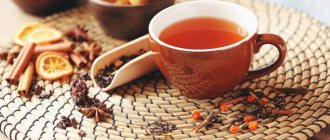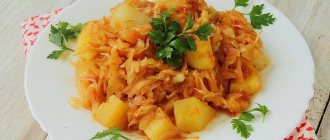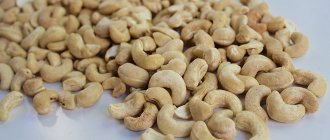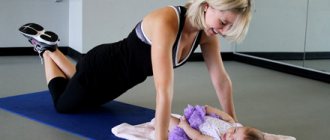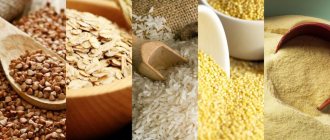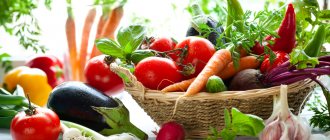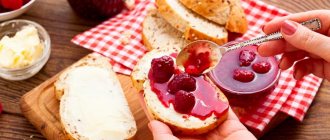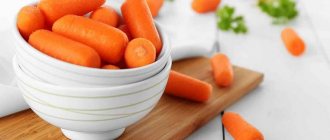Is halva good for mother and baby while breastfeeding?
Halva is a dessert made from nuts and seeds, which is prepared using honey, caramel, sugar and other sweeteners. There are many recipes, so the beneficial properties may vary. The product is high in calories, therefore it is an excellent source of energy. Since the recipe requires the use of high temperatures in preparation, you should not expect that halva is as healthy as the seeds and nuts from which it is made.
Read more in the article “Seeds during breastfeeding.”
Halva is allowed during breastfeeding, but the composition must be taken into account.
The product contains many vitamins, minerals and other beneficial substances that will benefit the mother’s body, depleted by pregnancy and breastfeeding.
A third of the composition of halva is vegetable fats. In addition, the composition includes folic acid and proteins. It is rich in vitamins B, PP, calcium, magnesium, sodium, iron and other minerals.
Due to its rich composition, halva has the following properties:
- increasing the fat content of breast milk;
- improvement of lactation;
- fight against fatigue;
- improving the functioning of the gastrointestinal tract;
- acceleration of metabolism;
- normalization of the nervous system;
- improved mood;
- preventing the development of anemia;
- strengthening teeth;
- improvement of skin and hair condition.
The benefits of halva depend on the main component. For example, sunflower halva prevents cancer, peanut halva helps with constipation and improves the functioning of the cardiovascular system. Sesame halva helps with headaches and is involved in cancer prevention.
Benefits and harms
Halva (halvicha products) is the name of a whole group of desserts for sweet tea. It benefits from many vitamins and fatty acids, which strengthen the vascular wall and improve blood circulation. This product also strengthens nails, heals hair, normalizes the condition of the skin and nerve cells, stabilizes the digestive system, accelerates the lactation process, and saturates milk with components beneficial for the child.
Sunflower oriental sweetness normalizes the protective functions of the body, the nervous system, improves the functioning of the heart and blood vessels, and improves the appearance of hair. The benefits of halva after consumption are felt by people suffering from anemia and diseases of internal organs. Products based on sesame seeds (tahini halva) have a beneficial effect on pulmonary function, prevent cancer, and restore respiratory function. A peanut-based product strengthens the walls of blood vessels, the heart muscle, and enhances brain function. Contains vitamin E, which is an antioxidant and immunostimulant of the body. Calcium is necessary to maintain bone and muscle tissue in normal condition and development.
B vitamins normalize the functioning of the heart, blood vessels, digestive organs, and brain activity. Nicotinic acid reduces the level of bad cholesterol, participates in cell metabolism, and dilates blood vessels.
We recommend reading: Garlic during breastfeeding
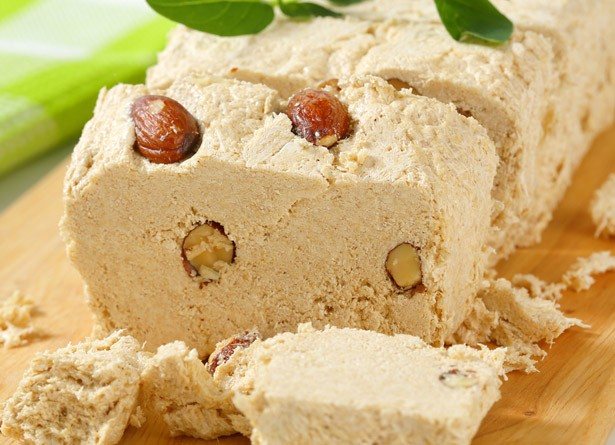
Any sweets and desserts that are made from natural ingredients, despite their usefulness, can cause negative consequences and a possible risk for the baby. Their use should be cautious and in minimal quantities. The main reason why halva made from seeds or nuts is harmful is the addition of chemical dyes, preservatives or aromatic fillers.
Halva is a high-calorie, allergenic product. Over time, the toxic metal cadmium (a carcinogen) accumulates in sunflower seeds, causing vomiting, convulsions, and sometimes the consequence of consumption is anaphylactic shock. Due to this characteristic, it is better to consume sesame halva during lactation. There is less harm than benefit from it. The main thing is to choose the right composition.
The absence of allergies in a young mother does not guarantee that the baby will not develop a rash, itching or skin irritation. And also the products are very heavy for a child’s fragile intestines, so the baby experiences colic, abdominal pain or constipation.
Large amounts of sugar contained in the product are contraindicated for diabetes, pancreatitis, pathologies of the liver, stomach or intestines. It is important to monitor the expiration date of the product; the halvic dessert should be stored in the refrigerator after opening the vacuum wrapper.
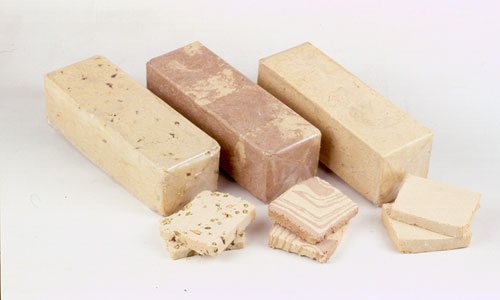
Possible harm to nursing mother and newborn
Despite all the benefits of the product, you should be very careful with this delicacy when breastfeeding. Halva contains seeds and nuts, most of which are among the strongest allergens.
You may also be interested in reading about condensed milk when breastfeeding in the first month.
The baby's fragile body receives with milk everything that the mother eats, so there is a high risk of an allergic reaction. It can manifest itself in the form of a rash, runny nose, sneezing, coughing, nasal congestion, and even angioedema or anaphylactic shock. Be especially careful with peanut halwa.
In addition to allergic manifestations, halva can cause increased flatulence and constipation. In young children, this can lead to colic, diarrhea or constipation, since the treat is a very difficult food for digestion. Consuming the product in large quantities may cause chills or drowsiness. Since halva is a very high-calorie dish, it can provoke rapid weight gain if you eat too much of it.
Not everyone is allowed to eat healthy treats. Contraindications include the following diseases:
- allergy;
- diabetes;
- obesity;
- diseases of the gastrointestinal tract;
- pancreatic diseases;
- urolithiasis disease;
- liver diseases.
Homemade halva recipe
Industrially manufactured products may contain additives that are harmful to babies: dyes, chemicals to extend shelf life and enhance taste. Therefore, when breastfeeding, the safest thing to do is to prepare your favorite dessert at home. Then you will definitely be sure of the composition and production time.
The basic recipe for making it yourself is as follows:
- take 2 cups of your desired base (seeds, peanuts, pistachios, almonds or any other nuts);
- For this amount you will need 150-170 grams of purified sunflower oil;
- In the basic recipe, you take one glass of sugar, but you can add a little more or less, depending on your taste preferences;
- flour: 1 cup;
- a third of a glass of water;
- Vanillin or vanilla sugar is added if desired.
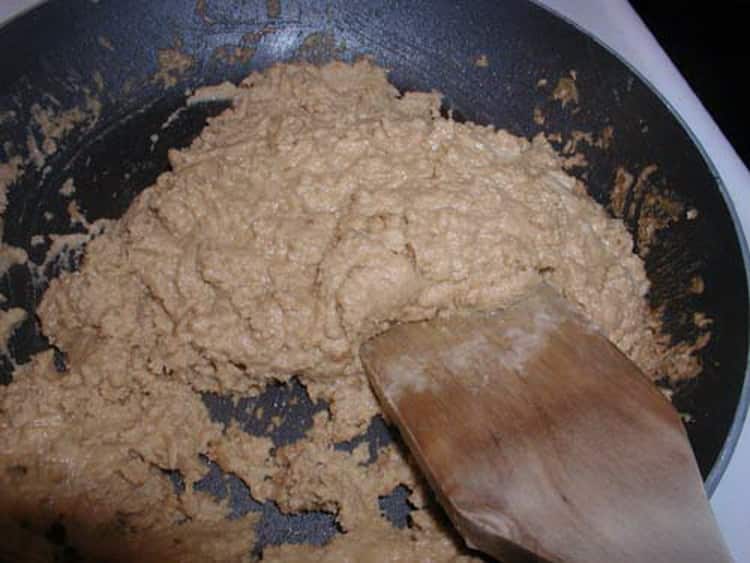
Two glasses of base are poured into a heated frying pan, fried, and then ground. To obtain a coarser or finer grind, you can use different kitchen tools: a coffee grinder, meat grinder, blender or food processor.
Separately, the flour is heated in a dry frying pan until golden brown. Then you need to mix the flour well with the nut mixture: to do this, you can grind the already combined ingredients again.
Then make the syrup:
- Heat water and sugar over low heat. The syrup is constantly stirred and boiled until the foam thickens;
- Pour oil into the finished syrup and mix;
- The nut-flour mixture and vanillin are gradually added here.

The finished mixture must be transferred to a mold, compacted with a press and placed in the refrigerator until hardened.
Important! The sweet product quickly loses its quality and then spoils in a warm room. Therefore, it is better to store dessert in the refrigerator, in a closed ceramic or glass container.
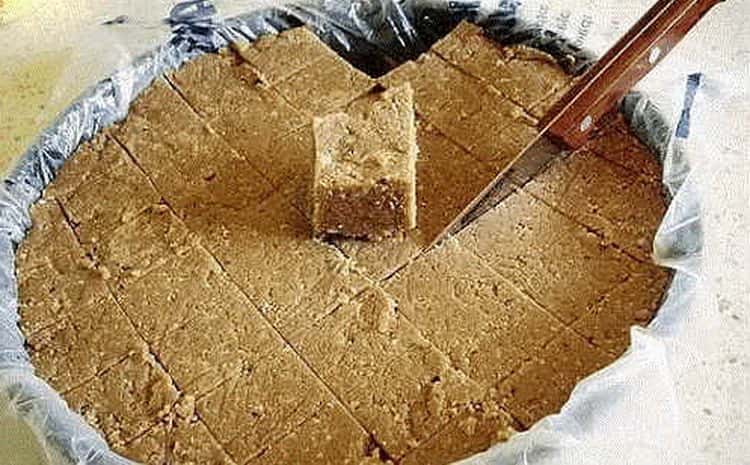
Is it possible to eat halva and how to use it correctly while breastfeeding?
Since halva is a valuable and healthy product, it is possible and even healthy to eat it while breastfeeding. It is only important to adhere to the rules of its use. Read the composition of halva carefully, as for the first time it is recommended to eat the product with a minimum amount of components, avoiding preservatives, dyes and other harmful substances. Choose nuts and seeds that are considered the least allergenic. It is better to postpone the peanut delicacy until the baby is older.
The first time, cut yourself a small slice and try it in the morning with clean water or tea. A negative reaction usually appears in the first day after use, but it can happen later, so it’s best to observe for about a week. If you notice allergic reactions or tummy problems, put the product aside for 2-3 months. If the baby feels well, you can gradually increase the portion. The maximum amount should not exceed 50–100 g per day. Halva should not be eaten more than 2-3 times a week.
How much halva can you eat a day?
| 1 month | 2 months | 3 months | 4–5 months | |
| How much halva can you eat? | Absolutely forbidden | You can do this after consulting your doctor; he will determine the dosage. | You can introduce small amounts of halva from minimally allergenic components into your diet. | You can consume up to 50–100 g per day no more than 3 times a week |
In the first week, first month after birth
In the first month after childbirth, especially in the first week, doctors recommend abstaining from sweets. It is recommended to eat strictly according to the breastfeeding diet. Experiments with introduction to the diet are prohibited. Since halva is considered a very allergenic product, eating it in the first month after childbirth is strictly prohibited.
Doctor Komarovsky's opinion
Dr. Komarovsky has a negative attitude towards eating sweets while breastfeeding. He recommends avoiding desserts and sweet fruits. According to his recommendations, halva should be abandoned, since it is an allergenic product, and it is unreasonable to expose the body to such stress and risks.
What kind of halva and when is it possible?
Doctors do not recommend introducing halva and marshmallows into the diet during breastfeeding until the child is 3 months old, but noting the benefits of the product, they sometimes allow it earlier. In this case, it is necessary to choose a product from the least allergenic components.
Sunflower
Sunflower halva is one of the most popular in our countries. It is rich in B vitamins and amino acids. Sunflower seeds are used to prepare it. It is useful for normalizing the functioning of the nervous system and has a beneficial effect on the functioning of the gastrointestinal tract. In addition, this halva strengthens the immune system and has a good effect on the condition of the skin and hair.
Thanks to regular consumption of treats, you can improve blood circulation and remove cholesterol from the blood. It normalizes the level of acid in the stomach.
Peanut
Peanut halva is considered one of the most healthy, and at the same time, the most allergenic. It contains a large amount of folic acid, vitamins B, D, PP. Its valuable composition makes it beneficial for the cardiovascular system. It actively promotes rejuvenation of the body, improves the condition of bones and teeth. This halva has a good effect on brain function.
Be careful when choosing peanut halva. It is best to prepare it at home, so you can be sure of the benefits of all the components. Due to the high allergenicity, it is best to try this type of halva later. It's best to try peanuts first. If there is no reaction to the nut, your introduction to halva will most likely go well.
Tahini (sesame)
Sesame halva is a product made from sesame seeds, while tahini is made from cake. This halva is a storehouse of B vitamins, linoleic acid, PP, magnesium, calcium, zinc, iron, phosphorus, copper and other useful substances.
It has the following useful properties:
- prevention of anemia;
- fight against colds;
- improving the condition of skin, hair and nails;
- cancer prevention;
- maintaining youthful skin;
- improving brain function;
- replenishment of the body’s energy reserves, etc.
This delicacy is considered safe during breastfeeding. Negative reactions in mother and baby to the product are extremely rare. Consuming the product in large quantities is harmful.
On our website there is a recipe for making homemade sesame halva in the article “Sesame during breastfeeding.”
Uzbek
This is a healthy and tasty delicacy that you can easily prepare yourself. Self-prepared Uzbek halva is allowed from 1 month after birth. To reduce the risk of negative effects on your baby, use goat's milk rather than cow's milk.
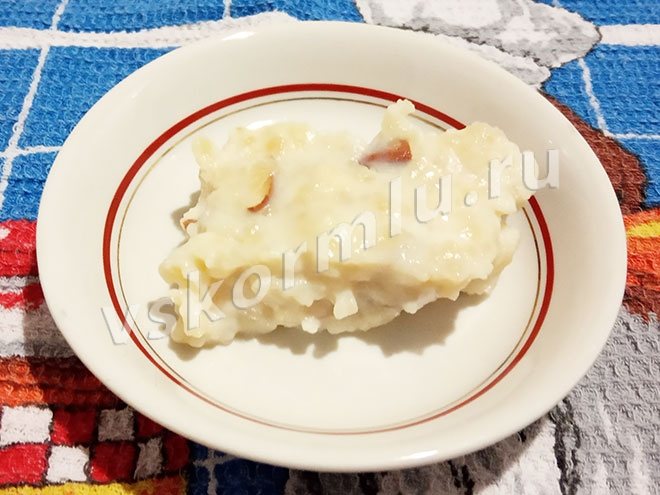
Homemade Uzbek halva for a nursing mother.
Compound:
- Milk - ½ liter.
- Flour - 3 tbsp. l.
- Sugar - 50 g.
- Ghee butter - 1 tbsp. l.
Preparation:
- Fry the flour and butter in a frying pan until brown.

If you don't have ghee, then use butter.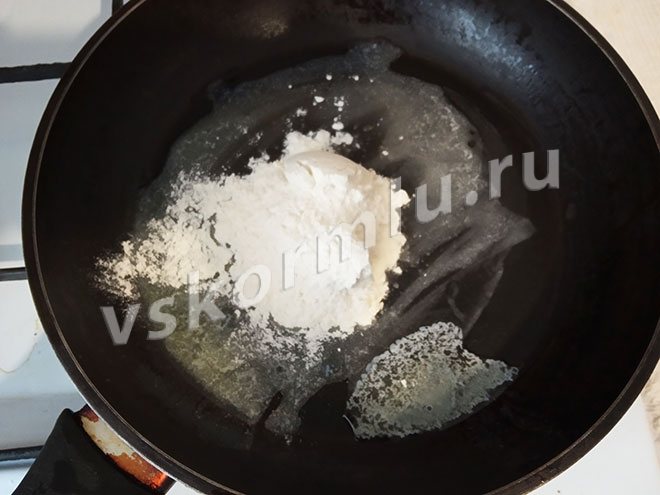
Wheat flour. Fried flour with butter. By the way, pediatricians do not recommend eating fried foods while breastfeeding. In any case, to eat or not to eat - each nursing mother decides for herself. - Boil milk and dissolve sugar in it.
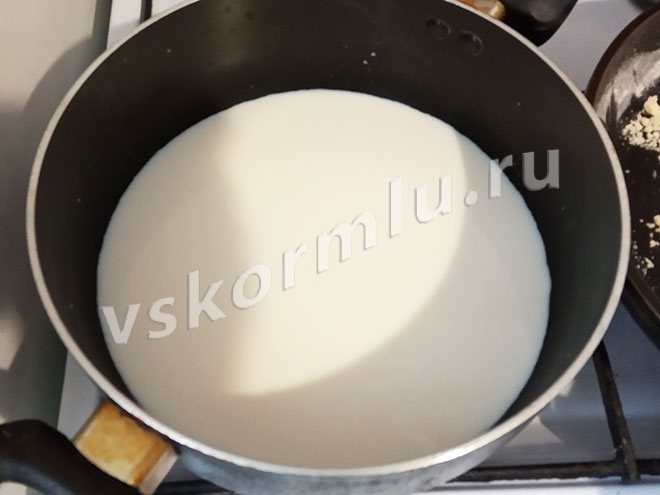
Heat the milk over low heat, stirring constantly so that it does not run away. - Mix milk and flour and cook over low heat until thickened. You can add any nuts to the halva, provided that they are already in your diet and the infant is not allergic to them.
- Pour the dough into pre-greased molds. The halva is ready, all you have to do is wait until it cools and hardens.
- Let it cool and you can eat.
On fructose
Fructose halva is considered no less healthy than regular halva, since fructose is a natural sweetener that is widely used in cooking. It practically does not change sugar levels, is well absorbed and has fewer calories than many sweeteners. This halva consists of sunflower (or other seed and nut) mass, molasses and fructose. You can eat halva with fructose during breastfeeding. If you see any sweeteners or preservatives in the product, you should not eat it.
Waffles with halva
Waffles with halva are a delicious and quick dessert. Waffles without harmful additives, which are usually present in store-bought products, can be eaten from two months after birth. To reduce the risk of allergies, use quail eggs instead of chicken eggs. They will need 2 times more.
Compound:
- Flour - 150 g.
- Butter - 100 g.
- Heavy cream - 100 ml.
- Sugar 35 g.
- Eggs - 3 pcs.
- Halva – 50 g.
Preparation:
- Beat butter and sugar.
- Add eggs and cream, continuing to beat.
- Add halva to the dough and mix well.
- Add baking powder and beat well.
- Place 2 tablespoons of mixture in the center of a preheated waffle iron and bake until done (about 3 minutes).
In Apple pie order
Often women are interested in what sweets they can eat while breastfeeding, because a bland diet quickly gets boring. Halva in chocolate is different from regular chocolate glaze. Since it is not recommended to eat chocolate during breastfeeding, you should not eat halva in chocolate either. Store-bought chocolate glaze contains many preservatives and chemical additives. It is better to choose pure natural halva.
Does halva help increase lactation and increase the fat content of breast milk?
Scientists say that a mother’s diet cannot influence the quantity and nutritional value of breast milk. Breastfeeding women claim that halva helps normalize lactation. Scientists are confident that the nutritional value of breast milk depends only on the baby’s needs and always fluctuates within approximately the same limits. Traditional medicine says that in addition to frequent feeding and the baby's needs, breastfeeding depends on the mother's nutrition. Eastern medicine agrees with this, which speaks of the benefits of halva for increasing the amount of milk and its nutritional value.
How to increase lactation with halva?
There are many folk remedies to increase lactation. One of them is halva. Even a small piece of product can cause a significant flow of milk. To enhance the effect, it is recommended to eat halva with milk, but it should be taken into account that children are allergic to cow protein, so milk should be carefully introduced into their diet. If you are afraid of an allergy to milk, then eat halva with warm water or tea so as not to increase the risk of developing an allergy.
Halva for breastfeeding
Halva is a very fatty product, so many sincerely believe that it can increase the fat content of mother's milk. However, breastfeeding experts say that this indicator of nutrient fluid does not change in any way depending on the woman’s diet. But on the other hand, the delicacy saturates the body with useful minerals, fatty acids and vitamins, which means they also enter the body of the baby who is suckling at the breast.
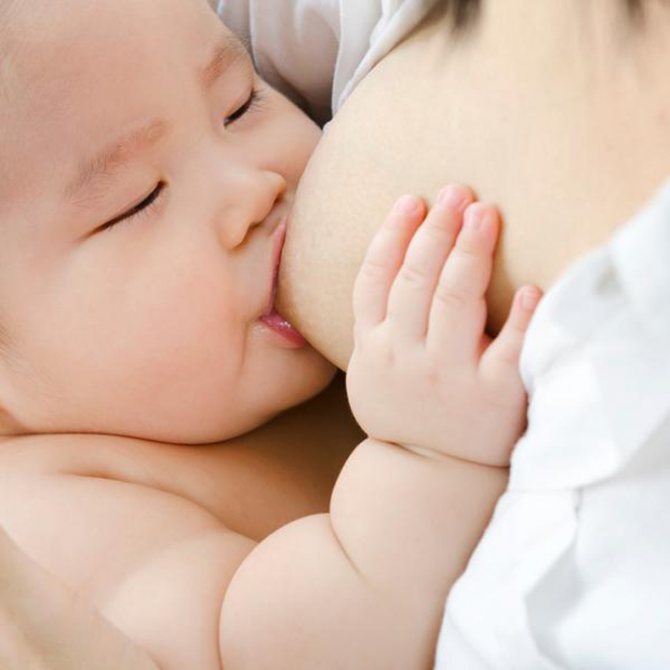
Halva does not affect the fat content and quantity of milk, but makes its composition more nutritious
Allergenicity of the product
The allergenicity of halva depends on what raw materials it is made from. Most often, allergies are caused by peanuts, so it is not advisable for a nursing woman to consume a treat with its addition.
Sugar itself is not an allergenic product, but it can increase its manifestations, for example, rash and itching.
As for homemade halva, it may contain honey, which also often causes the development of allergies in infants. When making treats yourself, a nursing woman should remember this danger.

Peanuts cause allergies more often than other nuts, so it is better for a nursing mother to avoid peanut halva.
Reviews
Katya, 29 years old
The pediatrician recommended eating halva to increase lactation. Well, nothing helped, there was less and less milk, and breastfeeding, warm drinks, formulas and teas for lactation did not give any results. I bought halva. I cut off a piece. I'm afraid, but I eat))) I've read about allergies, anaphylactic shock. Half an hour later the tide began to rise. Happiness knew no bounds. There was a lot of milk)) This is how GW was saved.
Margot, 24 years old
I love halva very much. There is no better treat for me. I couldn’t wait until the baby was 3 months old to eat... and he was sprinkled... very heavily... just before my eyes, spots began to appear on his arms and legs. I called an ambulance because Fenistil did nothing, he was too weak for such a reaction. It's a pity. I endured it for another year, my cheekbones were cramping, just like I saw in the store.
Roxana, 20 years old
My halva didn’t like it - it spilled out ((((((
Lena, 22 years old
I ate and washed it down with milk. This made my milk flow. But it is better to avoid peanut halva, as peanuts can cause allergies.
Natasha, 19 years old
From the first day I have been eating halva, the milk from it is richer and tastier :) It was recommended to me during the courses, and my breastfeeding sister at the maternity hospital advised me. I eat plain sunflowers, about 500 grams a week, washed down with tea with milk :)
